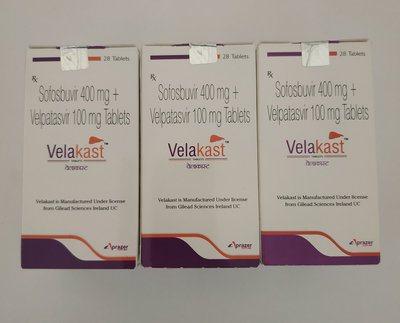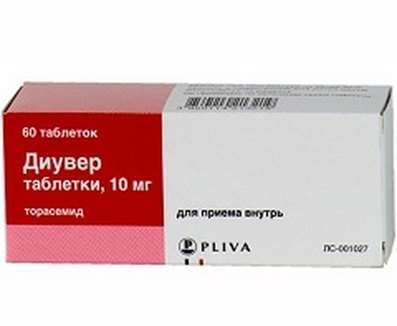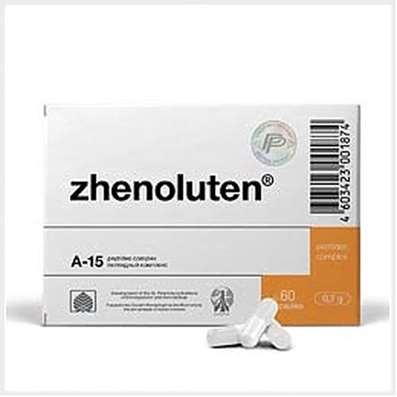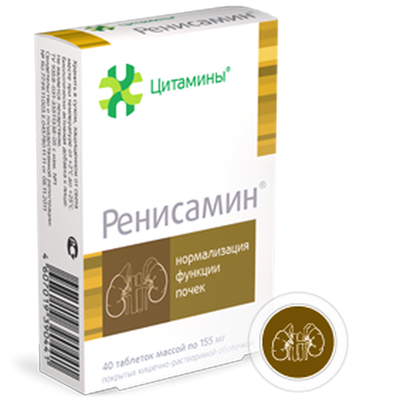Instruction for use: Oruvail
I want this, give me price
Active substance Ketoprofen
ATX code M01AE03 Ketoprofen
Pharmacological group
NSAIDs - Propionic acid derivatives
Nosological classification (ICD-10)
I05-I09 Chronic rheumatic heart diseases
M00-M25 Arthropathy
M05 Seropositive rheumatoid arthritis
Rheumatoid arthritis seropositive
M15-M19 Osteoarthritis
M45 Ankylosing spondylitis
Ankylosing spondylarthrosis, Marie-Strumpel disease, Ankylosing spondylitis, Pain syndrome in acute inflammatory diseases of the musculoskeletal system, Pain syndrome in chronic inflammatory diseases of the musculoskeletal system, Bechterew's disease, Ankylosing spondylitis, Diseases of the spinal column, Rheumatic spondylitis, Bechterew-Marie-Strumpel disease
M54.3 Sciatica
Ishialgia, Neuralgia of the sciatic nerve, Sciatic neuritis
M77.9 Other unspecified
Capsule, Periarthritis, Tendonitis, Tendopathy, Periarthropathy
M79.0 Other unspecified rheumatism
Degenerative rheumatic disease, Degenerative and rheumatic diseases of the tendons, Degenerative rheumatic diseases, Localized forms of rheumatism of soft tissues, Rheumatism, Rheumatism with a pronounced allergic component, Rheumatism of the articular and extraarticular, Rheumatic attack, Rheumatic complaints, Rheumatic diseases, Rheumatic disease of the spine, Relapses of rheumatism, Articular and extra-articular rheumatism, Articular and muscular rheumatism, Articular rheumatism, Articular syndrome with rheumatism, Chronic rheumatic pain, Chronic articular rheumatism, Rheumatoid diseases, Rheumatic diseases of the intervertebral disc
R52.2 Other constant pain
Pain syndrome, rheumatic origin, Pain at vertebral lesions, Pain in the chamber, Pain for burns, Pain syndrome weak or moderate, Perioperative pain,Moderate to severe pain, Moderately or weakly expressed pain syndrome, Moderate to severe pain, Ear pain of otitis, Neuropathic pain, neuropathic pain
T08-T14 Injuries to unspecified part of trunk, limb or body region
T14.3 Dislocation, sprain and damage to the capsular-ligamentous apparatus of the joint of the unspecified area of the body
Painful stretching of muscles, Pain and inflammation in tension, Dislocation of dislocation, Degenerative changes in the ligamentous apparatus, Edema due to sprains and bruises, Edema after interventions for sprains, Damage and rupture of ligaments, The musculoskeletal system is damaged, Damage to ligaments, Damage to the joints, Ligament ruptures, Tendon tendons,Ruptures of the tendons of muscles,Stretching, Crick, Stretching of the muscle, Sprain, Tension of the tendons, Extensions,Stretch muscles, Sprains, Tension of the tendons, Injury of the musculoskeletal system, Injuries to the joints, Injuries of capsule-articular tissues, Injuries of the osteoarticular system, Injuries to ligamentsInjuries to the joints, Joint wounds, Stretching of the ligamentous apparatus, Habitual stretching and tearing
Z100 * CLASS XXII Surgical practice
Abdominal surgery, adenomectomy, Amputation, Coronary angioplasty, Angioplasty of the carotid arteries, Antiseptic skin treatment for wounds, Antiseptic Hand, Appendectomy, atherectomy, Balloon coronary angioplasty, Vaginal hysterectomy, The coronary bypass, Interventions in the vagina and cervix, Interventions on the bladder, Intervention in the mouth, Restoration and reconstructive surgery, Hand hygiene of medical personnel, Gynecologic surgery, Gynecological intervention, Gynecological surgery, Hypovolemic shock during operations, Disinfection of purulent wounds, Disinfection of wounds edges, Diagnostic intervention, Diagnostic procedures, Cervical Diathermocoagulation, Long-surgery, Replacing the fistula catheters, Infection in orthopedic surgery, Artificial heart valve, cystectomy, Short-term outpatient surgery, Short-term operation, Short surgical procedures, Krikotireotomiya, Blood loss during surgery, Bleeding during surgery and in the postoperative period, Kuldotsentez, laser photocoagulation, laser coagulation, retinal laser coagulation, Laparoscopy, Laparoscopy in Gynecology, CSF fistula, Small gynecological operations, Small surgical procedures, Mastectomy and subsequent plastic, mediastinotomy, Microsurgical operations on the ear, Mukogingivalnye operation, suturing, Minor surgery, neurosurgical operation, Immobilization of the eyeball in ophthalmic surgery, testectomy, pancreatectomy, Perikardektomiya, The period of rehabilitation after surgery, The period of, convalescence after surgery, Percutaneous transluminal coronary angioplasty, Pleural thoracentesis, Pneumonia postoperative and posttraumatic, Preparation for surgical procedures, Preparation for surgery, Preparation of the surgeon's hands before surgery, Preparation of the colon for surgical procedures, Postoperative aspiration pneumonia in neurosurgical and thoracic surgery, Postoperative nausea, Postoperative bleeding, postoperative granuloma, postoperative shock, The early postoperative period, myocardial revascularization, Radiectomy, gastric Resection, bowel resection, uterine Resection, liver Resection, enterectomy, Resection of part of the stomach, Reocclusion of the operated vessel, Bonding tissues during surgical procedures, Removal of sutures, Condition after eye surgery, Condition after surgery, Condition after surgery in the nasal cavity, Condition after gastrectomy, Status after resection of the small intestine, Condition after tonsillectomy, Condition after removal of the duodenum, Condition after phlebectomy, Vascular surgery, Splenectomy, Sterilization of surgical instruments, Sterilization of surgical instruments, sternotomy, Dental surgery, Dental intervention in periodontal tissues, strumectomy, Tonsillectomy, Thoracic surgery, total gastrectomy, Transdermal intravascular coronary angioplasty, Transurethral resection, Turbinektomiya, Removal of a tooth, cataract surgery, Removal of cysts, tonsillectomy, Removal of fibroids, Removing the mobile primary teeth, Removing polyps, Removing broken tooth, Removal of the uterus body, Removal of sutures, Urethrotomy, Fistula likvoroprovodyaschih ways, Frontoetmoidogaymorotomiya, Surgical infection, Surgical treatment of chronic limb ulcersm, Surgery, The surgery in the anal area, The surgery on the colon, Surgical practice, The surgical procedure, Surgical interventions, Surgery on the gastrointestinal tract, Surgical procedures on the urinary tract, Surgical procedures on the urinary system, Surgical intervention of the genitourinary system, Surgical procedures on the heart, Surgical manipulation, surgery, Surgery on the veins, Surgical intervention, Vascular surgery, Surgical treatment of thrombosis, cholecystectomy, Partial gastric resection, transabdominal hysterectomy, Percutaneous transluminal coronary angioplasty, Percutaneous transluminal angioplasty, Coronary artery bypass, tooth Extirpation, Extirpation of milk teeth, pulpectomy, pulsative cardiopulmonary bypass, tooth Extraction, teeth Extraction, cataract extraction, Electrocoagulation, endourological intervention, episiotomy, Etmoidotomiya, Complications after tooth extraction
Composition and form of release
1 capsule contains ketoprofen 50 mg; 12 pieces in a blister, 2 blisters in a cardboard box.
1 suppository - 100 mg; in blistere 6 pcs., in a cardboard box 2 blisters.
1 bottle with lyophilized powder for injection - 100 mg; complete with a solvent in glass ampoules, in a cardboard box 6 sets.
1 g of gel - 25 mg; in tubes of 30 and 60 g, in a cardboard box 1 pc.
1 coated tablet - 100 mg; in a blister 10 pcs., in a cardboard box 3 blisters.
1 tablet of prolonged action, coated with a coating, 200 mg; in blistere 7 pcs., in a cardboard box 2 blisters.
1 ampoule (2 ml) with a solution for injection - 100 mg; in a cardboard box 10 pcs.
pharmachologic effect
Pharmacological action - anti-inflammatory, analgesic, reducing aggregation of platelets.
Blocks the synthesis of PG.
Pharmacokinetics
Well absorbed (caps., Candles), T1 / 2 - 6 hours; penetrates into tissues, creates a high concentration in the synovial fluid, binds to plasma proteins by 99%; penetrates the placental barrier; is excreted by the kidneys. With topical application in the form of a gel, it is absorbed extremely slowly and practically does not accumulate in the body. Bioavailability of the gel is about 5%, which allows you to achieve a local effect without affecting other organs.
Indication
Chronic inflammatory arthritis (rheumatoid arthritis, ankylosing spondylitis, psoriatic arthritis, arthrosis); extra-articular rheumatism, arthritis, acute sciatica, back pain (relief of pain); Postoperative pain (in / m form).
Gel - uncomplicated injuries, in particular sports, stretching or tearing ligaments and tendons, muscles, tendinitis, bruises of muscles and ligaments, post-traumatic pains and swelling.
Contraindications
Hypersensitivity, renal and hepatic insufficiency, peptic ulcer of the stomach and duodenum in the phase of exacerbation. Candles - proctitis and proctorurgy (in the anamnesis). Gel - dermatoses, eczema, infected abrasions and wounds (wetting).
pregnancy and lactation
It is not recommended in the I and III trimester of pregnancy, during lactation (breastfeeding should be stopped).
Side effects
Dyspeptic phenomena (nausea, vomiting, constipation or diarrhea, abdominal pain); ulcer of the stomach and duodenum, bleeding (including latent), intestinal perforation; headache, dizziness, drowsiness, allergic reactions.
Interaction
Simultaneous (and previous) administration of anticoagulants increases the risk of developing gastrointestinal bleeding.
Dosing and Administration
Inside, with meals, at the beginning of treatment, the daily dose is 300 mg in 2-3 doses, supporting - 150-200 mg / day.
Rectal - 1 candle in the morning and in the evening.
V / m - 1 vial (100 mg) per day (in acute cases, 2 vials a day) for 5-10 days, then switch to oral and / or rectally.
The gel should be applied twice a day, followed by a long and careful rubbing it into the inflamed or painful areas of the body, then you can apply a dry bandage.
Precautionary measures
Do not let the gel get on the mucous membranes and eyes.
A comment
The former name is Profenid, Profenid Gel.
storage Conditions
At a temperature of no higher than 25 ° C.
Keep out of the reach of children.
Shelf life
tablets prolonged action, coated with a coating of 200 mg - 3 years.
tablets, coated with a coating of 100 mg - 3 years.
suppositories rectal 100 mg - 3 years.
gel for external use 2.5% - 3 years.
capsules 50 mg - 5 years.
injection for 100 mg / 2 ml - 3 years.
powder lyophilized for the preparation of solution for injection 100 mg - 3 years.
Do not use after the expiry date printed on the package.

 Cart
Cart





